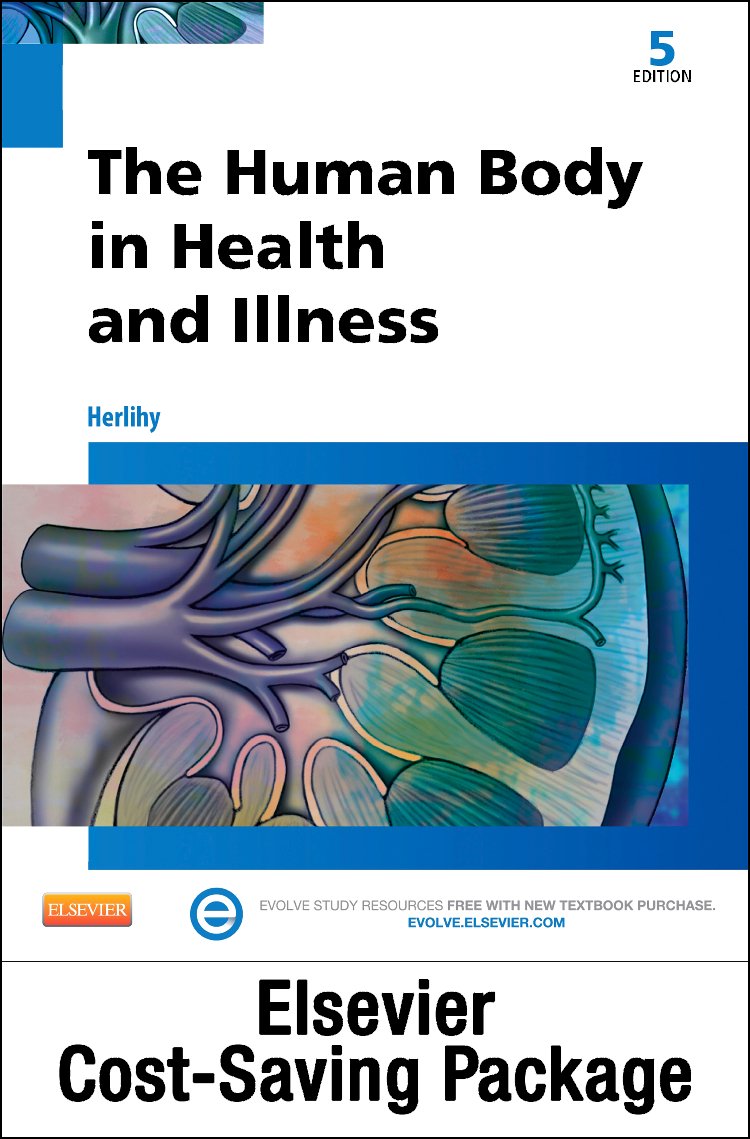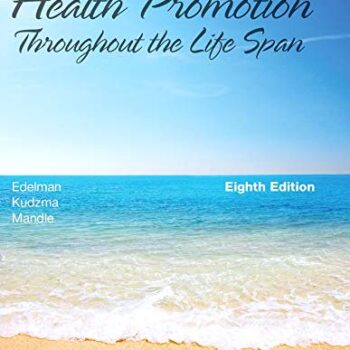
Test Bank For The Human Body in Health and Illness 5th Edition By Herlihy
Original price was: $55.00.$45.00Current price is: $45.00.
Digital item No Waiting Time Instant DownloadISBN-10: 0323353541 ISBN-13: 978-0323353540
The test bank for The Human Body in Health and Illness, 5th Edition” by Barbara Herlihy is an updated and reliable source that is helpful to mastering human anatomy and physiology. It is designed in such a way as to encourage a universal grasp of the systems of the body cells, structure, metabolism, and other necessary functions of the body. Even if you are at the level where you only need to learn the biochemistry of muscles or at the point where you want to understand more systems like the cardiovascular or endocrine system, this test bank has well-defined questions to fit each category.
Topics Covered in This Test Bank
This test bank features a variety of questions including multiple choice, true or false, fill-in-the-blank, and short answer questions, as well as those that require lengthy answers including descriptive write-ups, all purposively for one to develop a comprehensive understanding of the contents in each chapter. The following is a brief overview of the topics covered:
- Introduction to Human Anatomy – details the cell structure, body functions, and tissues.
- Skeletal and Muscular Systems – details an understanding of the bones, muscle types, function, and types of joints.
- Nervous System – involves more than just the basic questions on the structure of the brain and spinal cord, or the functions of the autonomic nervous system.
- Circulatory and Respiratory Systems – involves heart structures and blood circulation as well as the lung.
- Digestive and Urinary Systems – deals with the questions that explain nutrient absorption, waste elimination, and how kidneys work.
- Immune and Endocrine Systems – concentrates on hormones, the function of glands, and the immune response.
- Reproductive System and Development meaning: It is one of the aspects of human evolution and a branch of reproductive structure.
Why This Test Bank Should be Used
Using this test bank can greatly enhance your exam preparation as follows:
- Expanded Knowledge: Comprehension questions related to every chapter are part of the exam so mastering critical concepts such as metabolism, anatomy of blood vessels, and functions of tissues will be essential.
- Reinforcement with Actual Exam Questions: When attempting exams there are high chances of seeing similar questions and this is because many lecturers make use of test banks or questions from other previously done tests.
- Concentrated Learning: The test ceases the integrative learning of joined physiologies and targets specific content, for example, structures of the integumentary system, structures, and functions of digestive organs and their components, the introduction of microbiology, and many more.
- Individualized Progression: Complete each section in turn, mastering one aspect of the subject before moving on to the next at whatever speed you wish.
Conclusion
The Test Bank for “The Human Body in Health and Illness, Fifth edition” authored by Barbara Herlihy is not only a testing source but also quite an advanced source of strategy as it seeks to assist students in the revision of key areas of human anatomy and physiology. Consequently, this resource will broaden your comprehension regarding human anatomy, which will make you confident during examinations and provide a firm basis for you in the fields of health and medicine that would be applicable in your schooling as well as work-related activities.
Test Bank For The Human Body in Health and Illness 5th Edition By Herlihy
Chapter 3: Cells Test Bank
MULTIPLE CHOICE
1. Which of the following is considered the control center of the cell?
|
a. |
Mitochondrion |
|
b. |
Nucleus |
|
c. |
Lysosome |
|
d. |
Centriole |
ANS: B
2. The mitochondrion is called the power plant of the cell because _____ within the mitochondrion.
|
a. |
most of the ATP is produced |
|
b. |
all protein synthesis occurs |
|
c. |
all DNA is located |
|
d. |
all ribosomes are located |
ANS: A
3. Which of the following is (are) found on the rough endoplasmic reticulum?
|
a. |
Ribosomes |
|
b. |
Cilia |
|
c. |
Lysosomes |
|
d. |
DNA |
ANS: A
4. The rough ER is the site of
|
a. |
fatty acid and steroid synthesis. |
|
b. |
Krebs cycle activity. |
|
c. |
protein synthesis. |
|
d. |
intracellular water storage. |
ANS: C
5. Which of the following is most associated with the ribosome?
|
a. |
ATP production |
|
b. |
Intracellular housecleaning |
|
c. |
Glycogen storage |
|
d. |
Protein synthesis |
ANS: D
6. What is the transport mechanism in this description: A passive process that “pulls” water from an area where there is more water to an area where there is less water?
|
a. |
Filtration |
|
b. |
Endocytosis |
|
c. |
An ATP-driven pump |
|
d. |
Osmosis |
ANS: D
7. What is the transport mechanism in this description: A passive process that uses a pressure difference as its driving force?
|
a. |
Facilitated diffusion |
|
b. |
An ATP-driven pump |
|
c. |
Diffusion |
|
d. |
Filtration |
ANS: D
8. A beaker is divided into two compartments by a semipermeable membrane. Compartment A contains a 20% NaCl solution and Compartment B contains a 50% NaCl solution. The membrane is permeable to water but not to Na or Cl–. Initially,
|
a. |
water diffuses from compartment B to compartment A. |
|
b. |
Na diffuses from compartment B to compartment A. |
|
c. |
Na diffuses from compartment A to compartment B. |
|
d. |
water diffuses from compartment A to compartment B. |
ANS: D
9. A beaker is divided into two compartments by a semipermeable membrane. Compartment A contains a 20% NaCl solution and Compartment B contains a 50% NaCl solution. The membrane is permeable to water but not to Na or Cl–. At equilibrium, the
|
a. |
the volume of water in compartment A will be greater than the volume in compartment B. |
|
b. |
volume in both compartments A and B will be equal. |
|
c. |
the concentration of compartment A will decrease. |
|
d. |
volume in compartment B will be greater than the volume in compartment A. |
ANS: D
10. A beaker is divided into two compartments by a semipermeable membrane. Compartment A contains a 20% NaCl solution while Compartment B contains a 50% NaCl solution. The membrane is permeable to both water and Na and Cl–. Initially,
|
a. |
Na and Cl– diffuse from compartment B to compartment A. |
|
b. |
water diffuses from compartment B to compartment A. |
|
c. |
Na and Cl– diffuse from compartment A to compartment B. |
|
d. |
Na diffuses from compartment A to compartment B and Cl– diffuses from compartment B to compartment A. |
ANS: A
11. A beaker is divided into two compartments by a semipermeable membrane. Compartment A contains a 20% NaCl solution and Compartment B contains a 50% NaCl solution. The membrane is permeable to both water and Na and Cl–. At equilibrium, the
|
a. |
volume in compartment A will be greater than the volume in compartment B. |
|
b. |
volume in compartment B will be greater than the volume in compartment A. |
|
c. |
concentrations and volumes will be the same in both compartments. |
|
d. |
concentration of salt is greater in compartment A than in compartment B. |
ANS: C
12. What are the hairlike structures located on the outer surface of the cell membrane?
|
a. |
Mitochondria |
|
b. |
Ribosomes |
|
c. |
Cilia |
|
d. |
Centrioles |
ANS: C
13. What is the extensive internal membrane system that forms channels and is concerned with the synthesis of protein and steroids?
|
a. |
Mitochondria |
|
b. |
Lysosomes |
|
c. |
Endoplasmic reticulum |
|
d. |
DNA |
ANS: C
14. Lysosomes are filled with
|
a. |
powerful enzymes that destroy cellular debris and pathogens. |
|
b. |
cilia. |
|
c. |
DNA. |
|
d. |
blood. |
ANS: A
15. Which of the following best describes the power or driving force for active transport?
|
a. |
ATP |
|
b. |
Pressure |
|
c. |
DNA |
|
d. |
H |
ANS: A






